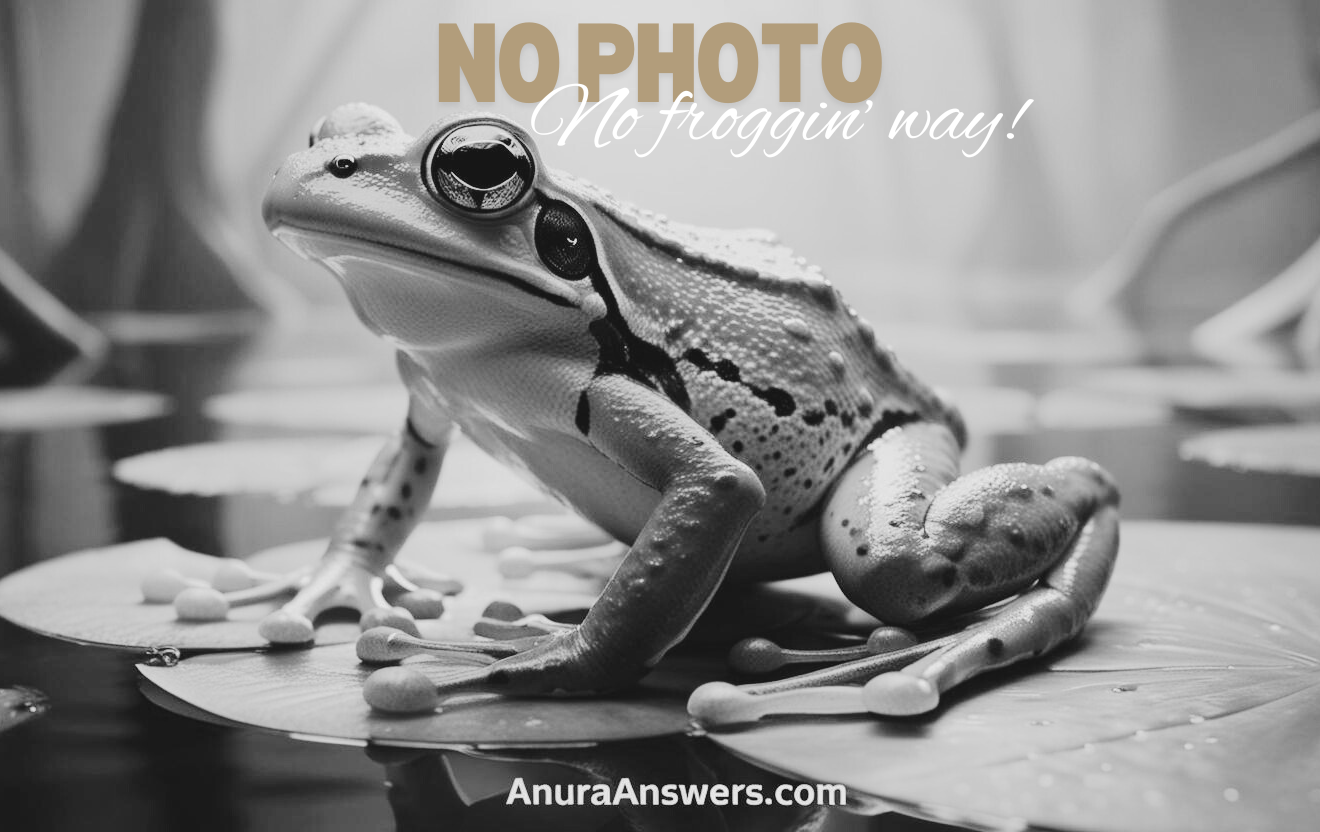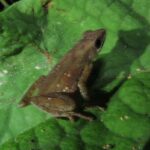- Spelaeophryne methneri: The Secretive Cave Frog of East Africa
- Taxonomy and Classification: Unveiling Family Secrets
- Natural Habitat: Realm of Eternal Darkness
- Physical Characteristics: Master of Subterranean Camouflage
- Behavior and Life Cycle: Navigating Life In Darkness
- Ecological Role: Sensitive Sentinels Below Ground
- Threats and Conservation Status: Protecting Hidden Lives
- Cultural and Scientific Significance: An Amphibious Wonder of Evolution
- Conclusion: Illuminating the Mysteries Below
Spelaeophryne methneri: The Secretive Cave Frog of East Africa#
In the misty foothills and shadow-drenched caves of East Africa lives a frog so elusive it seems almost mythical—Spelaeophryne methneri, known colloquially as Methner’s cave frog. Discovered in the ethereal glow of a subterranean stream nearly a century ago, this enigmatic amphibian captures imaginations with its extraordinary adaptation to life in perpetual twilight. Far removed from the vibrant greens and chorusing calls typical of rainforest frogs, Methner’s cave frog embodies a quiet mystery that draws biologists and nature enthusiasts alike into its fascinating underground realm.
Hidden beneath limestone cliffs and cavernous tunnels, this amphibian spends most of its life in perpetual darkness, its biology finely tuned to the demands of an existence on the threshold of visibility. Its ghostly pallor, delicate limbs, and cautious movements hint at generations of life spent far beyond the reach of sunlight, offering scientists valuable insights into evolutionary adaptation and sensitive cave ecosystems.
Despite its allure among researchers, Spelaeophryne methneri remains poorly understood, its elusive nature safeguarding its ecological secrets. This article invites readers on a journey beneath the surface, illuminating the life and legacy of one of Africa’s most intriguing amphibians while highlighting the conservation urgency surrounding its fragile habitat.
Taxonomy and Classification: Unveiling Family Secrets#
Belonging to the family Brevicipitidae, Spelaeophryne methneri boasts an intriguing heritage. It is the sole representative of its genus, Spelaeophryne, a name aptly translating from Greek as “cave frog.” First described by esteemed German herpetologist Fritz Nieden in 1926 after an expedition led by pioneering naturalist Dr. Walter Methner, the species intrigued scientists from the very beginning. Recognizing Dr. Methner’s contribution, the frog was fittingly granted the honorific “methneri.”
The family Brevicipitidae itself comprises diminutive, round-bodied frogs that predominantly dwell in subterranean or leaf-litter habitats across sub-Saharan Africa. Methner’s cave frog shares evolutionary roots with its cousins, but uniquely diverged upon entering Tanzania’s subterranean niches, thus reflecting distinct evolutionary pressures and adaptations found nowhere else within its family.
Natural Habitat: Realm of Eternal Darkness#
Spelaeophryne methneri is endemic to Tanzania, specifically restricted to limestone caves and adjacent subterranean waterways in the East Usambara Mountains. A region renowned for its exceptional biodiversity and forest-covered slopes, the Usambara Mountains harbor diverse and unique organisms shaped by millennia of isolation and environmental pressures.
Within this ancient terrain, Methner’s cave frogs occupy specific niches characterized by humid conditions, stable temperature, and constant absence of sunlight. They favor hidden caverns near flowing subterranean streams that seep gently through porous rock, creating pools and damp, moss-slicked walls ideal for frog habitation. The stillness of these karst caves, punctuated only by trickling water droplets, provides an environment profoundly different from the noisy rhythm of surface forests.
This extreme specialization and habitat preference underline the frog’s strong dependence on caves that sustain their unique physiology and behavior, making conservation of these underground habitats utterly essential.
Physical Characteristics: Master of Subterranean Camouflage#
A casual observer might mistake Methner’s cave frog for an ethereal apparition rather than a living amphibian. Measuring scarcely longer than two centimeters from snout to vent, the species exhibits characteristic brevicipitid features: a compact, spherical body, short limbs adapted for careful movements, and strikingly smooth skin devoid of the pronounced patterns familiar in aboveground frogs.
Its ghostly appearance—marked by pale, translucent skin with hints of pink or gray, especially around the limbs and toes—speaks volumes about a life hidden from daylight. Reduced pigmentation aligns perfectly with a habitat devoid of light, demonstrating evolutionary ingenuity to conserve metabolic resources in the absence of ultraviolet radiation.
Equally intriguing are its eyes—reduced, small, and darkly pigmented, almost vestigial given its permanent state of Near-total blindness. In subterranean frogs like Methner’s, acute hearing and sensitivity to vibrations overshadow eyesight, allowing them to navigate safely in pitch darkness. Remarkable sensory organs packed across their skin surface help them judge their surroundings and locate prey by subtle shifts of water currents and sound vibrations reflecting within cave walls.
Behavior and Life Cycle: Navigating Life In Darkness#
Although comprehensive data on the full lifecycle of Spelaeophryne methneri remains incomplete due to its elusive behavior, available research and observations highlight remarkable evolutionary solutions. Primarily nocturnal—a curious distinction since they inhabit permanently dark environments—they rely instead upon subtle ecological cues within their mysterious subterranean environment.
Feeding Habits: Silent Predators of the Underground#
This cave-adapted frog preys primarily on small invertebrates such as cave-dwelling insects, tiny arachnids, springtails, or larvae attracted to dampness underground. With small, soft jaws and a sticky, protractile tongue, Methner’s cave frog deftly captures prey, startlingly efficient even in total darkness. Their hunting strategy relies on precise location tracking via vibration-sensitive receptor cells, remarkable for their acute responsiveness deep within cave ecosystems.
Mating and Reproduction: Precious Life in Secrecy#
Given limited access opportunities for observation, our understanding of reproduction remains scant, though similar brevicipitid species are known to exhibit extraordinary parental behaviors. It’s presumed Methner’s frogs employ terrestrial egg-laying strategies—typically depositing eggs within moist cracks and fissures in sheltered crevices, protected from potential threats. Embryonic development likely bypasses free-swimming tadpole stages, with unhatched offspring undergoing direct development inside eggs before emerging fully-formed young froglets—another advantageous adaptation suited to cave life.
Ecological Role: Sensitive Sentinels Below Ground#
Spelaeophryne methneri plays a crucial sentinel role as bioindicators within their delicate cave ecosystems. Their sensitivity to environmental fluctuations, water purity changes, and even subtle climate shifts positions these frogs as living barometers for cave ecosystem health. They depend upon delicate ecological webs below ground—predators and prey intertwining in harmonious balance—that public science has only begun to unravel. Predatory spiders and centipedes occasionally prey upon the frogs, making them not just indicators but important intermediates in subterranean food chains.
Threats and Conservation Status: Protecting Hidden Lives#
Sadly, Methner’s cave frog faces growing threats today despite its reclusive nature and remote caves. IUCN currently categorizes the species as Vulnerable, highlighting habitat loss as their greatest existential threat. Limestone extraction, deforestation for agriculture, and pollution increasingly disturb and fragment cave habitats, threatening to isolate and eventually decimate delicate populations.
Climate change further complicates the scenario, disrupting rainfall patterns vital for sustaining underground moisture. Conservation responses must prioritize habitat preservation alongside increased research and monitoring. Recent local initiatives and nature conservation groups have begun advocating for protection of crucial cave networks, laying essential groundwork toward safeguarding Methner’s hidden world for future generations.
Cultural and Scientific Significance: An Amphibious Wonder of Evolution#
While cultural resonance remains limited due to their cryptic existence, Methner’s cave frogs capture scientific imaginations profoundly. Researchers celebrate them as evolutionary marvels, providing insight into adaptive strategies within specialized environments. Studies on these frogs significantly contribute to broader biological understandings—particularly regarding sensory adaptations, pigment loss in subterranean animals, and developmental biology.
Respected for their distinctiveness and ecological importance, Spelaeophryne methneri represents a living emblem of Africa’s underground biodiversity—the vital yet hidden life-threads interwoven beneath Earth’s surface.
Conclusion: Illuminating the Mysteries Below#
Methner’s cave frog remains a creature of haunting beauty and evolutionary wonders deserving increased attention. By better understanding and protecting its fragile habitat, we safeguard a piece of Africa’s extraordinary natural heritage. As protectors, enthusiasts, and stewards of biodiversity, our role is to spotlight these hidden worlds, advocating fiercely for conservation policies and efforts to protect both habitat and inhabitants.
Let curiosity guide your journey further; delve deeper into understanding subterranean biodiversity, join conservation drives, and support research. Methner’s cave frog, Spelaeophryne methneri, gently reminds us of the beauty hidden beneath and the responsibility we share to preserve Earth’s mysterious and irreplaceable life forms.







